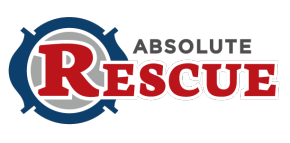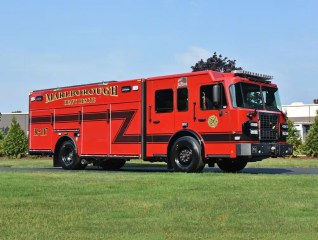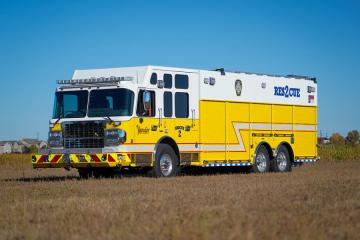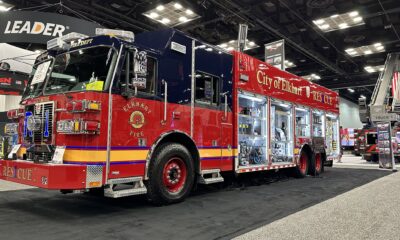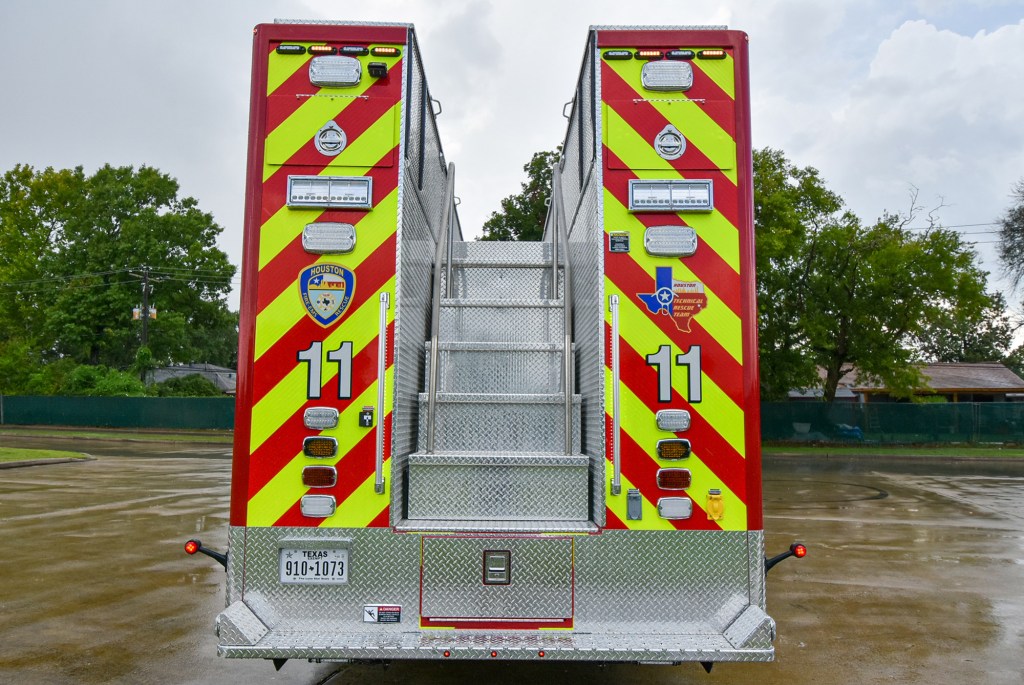
Vehicle and machinery rescue scenarios where objects must be lifted to gain access to victims can become quickly overwhelming. The adrenaline-dumping factor is making technical and tactical decisions that match the needs of the victim(s) and the safety of the crew.
However, a systematic approach to these decisions allows personnel on scene to quickly progress through a menu of options that are well rehearsed and founded in sound engineering and equipment operations. The objective is to start simple and add complexity and capability as the situation dictates.
To get started, we need to consider some basic principles about lifting. When analyzing the load to lift consider these four factors.
- Weight of the load
- Stability of the load
- Access to the load
- Victim orientation to the load
The weight of the load should be quickly calculated to formulate safety parameters for what equipment and techniques can be safely applied. This general calculation should also provide some insight as to the survivability profile for the victim.
Lifting objects that exceed the design loads of your equipment can result in catastrophic failures. If you are in over your head and are facing a load that you cannot calculate, stop and get help. This help can often be found from your local heavy wrecker organizations.
Use this guidelines for estimating weight:
- Compact cars: 4,500 pounds
- Mid-size car or sedan: 5,500 pounds
- Light trucks, vans and SUVs: 7,000 pounds
- Level II vehicles or commercial vehicles require more in depth analysis, which involves shipping manifests to ascertain the weight of the cargo as well as the weight of the vehicle. These weights will typically range from 20,000 to 80,000 pounds; most commercial vehicles are classified based on their gross vehicle weight.
 Analyzing Load Stability
Analyzing Load Stability
Analyze the load’s stability from two perspectives: what is the stability of the load now, and what will the stability of the load be during lifting operations.
Stability of the load will be impacted by the position of the vehicle as well as the base that the vehicle is resting on. For example, an upright vehicle on all four wheels may be deemed as relatively stable provided the base or roadway is flat.
As soon as the vehicle position or the supporting base is altered, kinetic or potential energy exists. Gravity will cause every potential load to seek a zero energy state.
Access to the load will determine lifting points as well as equipment applications. Vehicles should be lifted from structural points, not cosmetic or dynamic points. For example, outer body panels, bumper covers, roofs and deck lids may have to be skinned or removed to gain access to more structural metal when applying struts as stabilizing or lifting equipment.
Additionally, suspension components and large body panels that will easily crush, such as hoods, roofs and deck lids, should be avoided as lifting points because of their dynamic nature. Dynamic elements may respond unpredictably and unfavorably to lifting and stabilization.
It is imperative to consider the victim’s orientation to the vehicle being lifted. The fastest, safest and most efficient lift will not lift the entire vehicle, but only the portion that is preventing access to extricate the victim. This also increases the safety margin and effectiveness of the lifting equipment and reduces the load being lifted.
Once these four basic components have been addressed rescuers can start applying some stabilization and lifting fundamentals while they finalize the action plan.
Applying the Fundamentals
Initially, establish four points of stability to the vehicle. This is the primary stabilization. Step chocks, wedges, cribbing, etc., are quick and rudimentary pieces of equipment that create a moderately safe and stable platform.
Maintain awareness of potential access areas, cut zones and lifting points, and ensure that these initial stabilization points do not interfere with other operations.
A common example of this is four step chocks placed directly under the frame rails or rocker panels directly behind the front wheel wells and directly in front of the rear wheel wells. This provides vertical support for the A, B or C pillars and allows for effective side access and dash displacement operations.
Next, determine the vehicle’s lifting and pivoting points. The heaviest portion of the vehicle will always be the engine compartment. If possible, use that as the pivot point and the lighter portion of the vehicle, the cargo compartment, as the lifting point.
If the vehicle has come to rest on a Jersey barrier or similar object, try to use the portion of the vehicle that is already on the ground as the pivot point and the elevated portion as the lift point. This may not always be possible, but provides a basic starting point.
Implement secondary stabilization once the pivot point has been established. Ensure that the pivot point is well stabilized and will not shift or slide during lifting operations.
Assess the lift point and apply versatile stabilization equipment that will travel with the load as it is lifted. This can be as simple as box cribbing and wedges or as advanced as mechanical or pneumatic struts or hydraulic rams. Try to use a three-point approach — apply three contact points to the vehicle to form a load triangle.
Here are some basic examples of this approach.
Upright Vehicle
Use the primary stabilization step chocks on one side as two points of contact for the pivot side. Build a box crib on the lift side between the two step chocks as the lifting point, resulting in three points of contact.
The two step chocks on the lifting side can be converted to progress capture box cribs once the lift commences or two short struts can be placed in the wheel wells to capture progress.
Lateral Vehicles
Use the vehicle nose as the pivot point or one point of contact and apply additional wedges. Place a strut to the roof side and a strut to the undercarriage side directly across from one another near the rear of the vehicle, resulting in three points of contact.
There can be a slight deviation in the placement of these struts but it should not be extreme or the load will become highly unstable.
Inverted Vehicles
Use the nose, which will naturally be on the ground due to weight distribution, as the pivot point or one point of contact and apply a strut to each rear corner of the vehicle, resulting in three points of contact.
Lifting Sequence
Once the vehicle is stabilized, we can begin the lifting sequence. Sometimes the line gets blurred as some minor lifting may be required to implement the stabilization equipment.
For example, in a lateral vehicle placement, when applying a strut to the undercarriage side and a strut to the roof side, rescuers may need to run a ratchet strap from strut to strut under the vehicle. If that void does not exist, it will need to be created with a minor lift.
Instituting a progression for lifting options is vital. When the whole crew is well trained and in tune with a progression, it facilitates an efficient flow of equipment as well as lifts.
The rescue driver cannot produce an all-inclusive working cache of equipment in the blink of an eye nor can a crew leader or officer demand an all-inclusive resource cache all at once.
If all rescue personnel know they are going to start with one equipment system and progress to another, then another and so on, then all personnel will be capable of staging, deploying and operating those systems in a much more timely and efficient manner. This is a possible progression.
Lever Lift
Eliminate voids between stable ground and the vehicle with box cribs. Apply class I or class II lever applications with a long implement such as a spud bar, roof ladder or long timber (8- to 12-foot 4×4). Class I applications will require an additional fulcrum to be constructed using cribbing near the lift point.
The horizontal load capacity of these implements will be relatively unknown and may cause damage to the implements. Also, it is imperative that lifting progress be captured throughout the lift as these implements may fail.
This will produce varying lift heights depending on the length of the lever and the relationship between the weight of the load and the force that can be applied and withstood by the lever. This is a very fast lifting application but relatively risky and minimal in lift if applied safely to not damage the lever or lose the load.
Wedge Lift
Eliminate voids between stable ground and the vehicle as needed with box cribs. Insert large wedges under the vehicle lift point and drive them towards the load with a heavy sledge or similar hand tool.
Ensure that lifting progress is captured as needed with additional elements. This is a safer and more stable lift, but produces minimal lift and takes more time to develop than the lever lift.
Hydraulic and Mechanical Lift
Eliminate voids between stable ground and the vehicle as needed with box cribs. With hydraulic applications, apply a hydraulic ram or spreaders to the load and lift in small increments. A continuous lift may result in the load shifting as it gains lateral momentum.
It is imperative that lifting progress be captured throughout the lift as this lift is highly unstable. Mechanical struts that can telescope or lift are very effective but require some time to initially position, assemble and stabilize with pressurizing straps, base plate pins or both.
Pneumatic Lift
Eliminate voids between stable ground and the vehicle as needed with box cribs. Assemble the airbag system and insert airbags under the lift point. Ensure that progress is captured and that personnel adhere to the established safe working zones involving potential kick out.
This will produce tremendous lift depending on the type and quantity of bags used. This system often takes the most time to build and is the most difficult to learn for effective and safe operations, but is highly effective.

This content provided in partnership with FireRescue1.com
Techniques
Heavy Stabilization & Lift Class
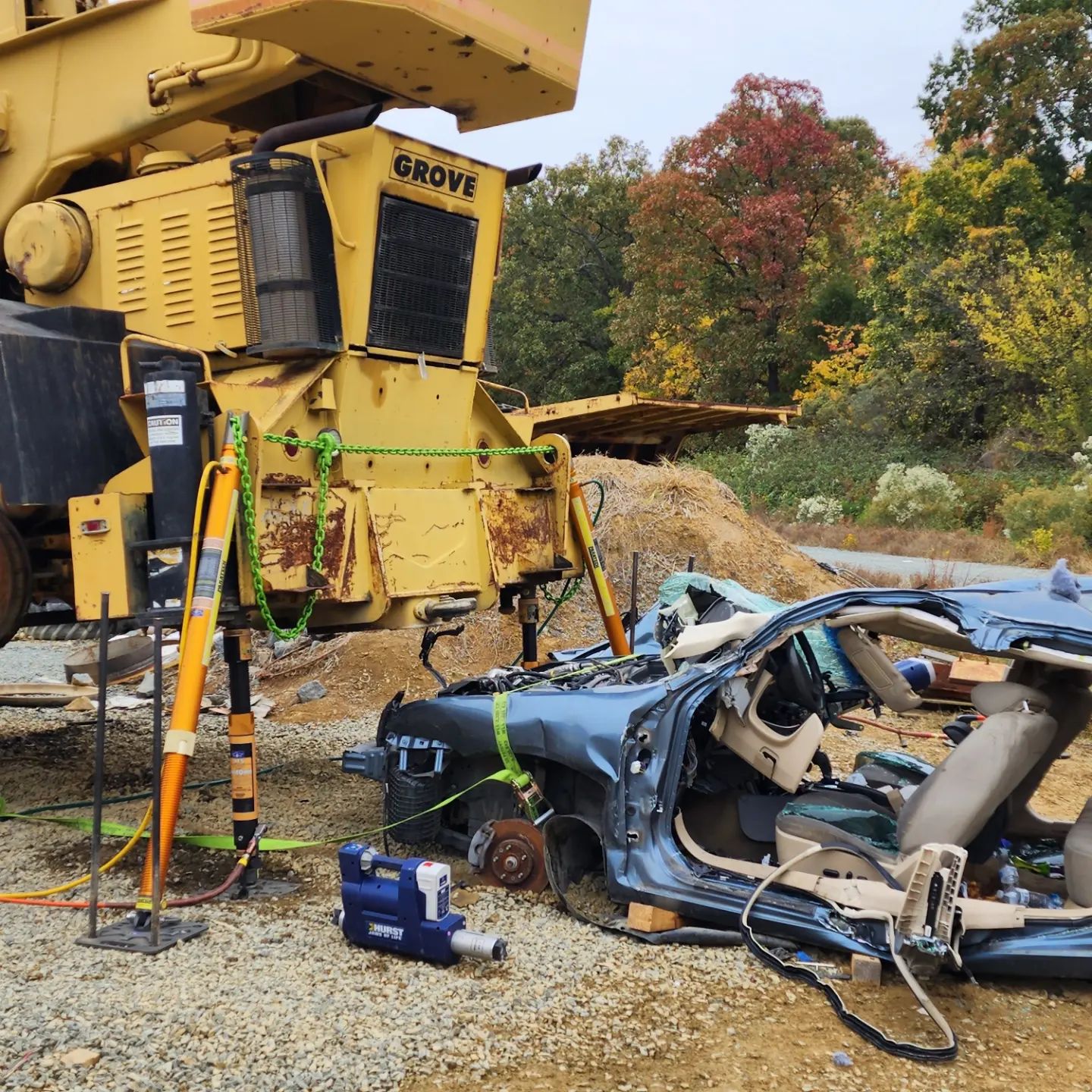
Heavy Stabilization & Lift Class
This weekend, Toranze Lee and Premier Extrication held their Heavy Stabilization and Lifting class taught. The class focused on advanced techniques using the Paratech equipment, eDraulic tools, grip hoists, vehicle stabilization methods, airbags for lifting, power tools, and the use of heavy wreckers for extrication.
Some of the departments that attended:
Building Collapse
Houston Fire Department’s Trailer 11
Check out Houston Fire Department’s new Trailer 11 purchased from Metro Fire Apparatus Specialists, Inc. It’s packed for of Paratech equipment with room for more!

Houston Fire Department’s Trailer 11
Check out Houston Fire Department’s new Trailer 11 purchased from Metro Fire Apparatus Specialists, Inc. Check out the pictures below and make sure you follow the social media pages from Metro Fire Apparatus Specialists.
Overall Pictures
Compartments Pictures
Rear Pictures
Heavy Rescue
Overturned Tractor-Trailer Extrication
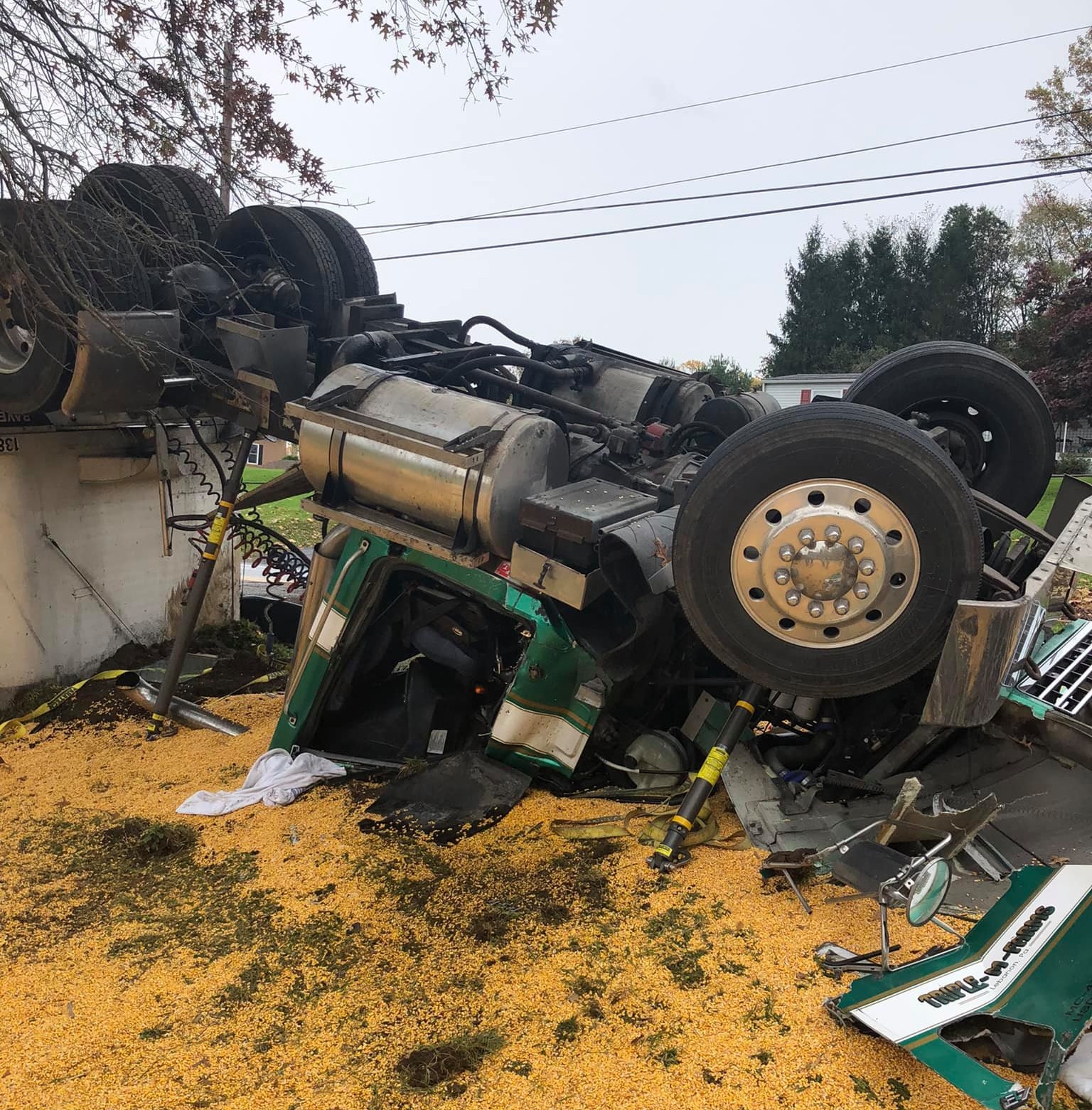
Overturned Tractor-Trailer Extrication
Check out the overturned Tractor-Trailer, confirmed entrapment, and power pole down that Elizabethtown Fire Dept Station 74 had earlier today.
